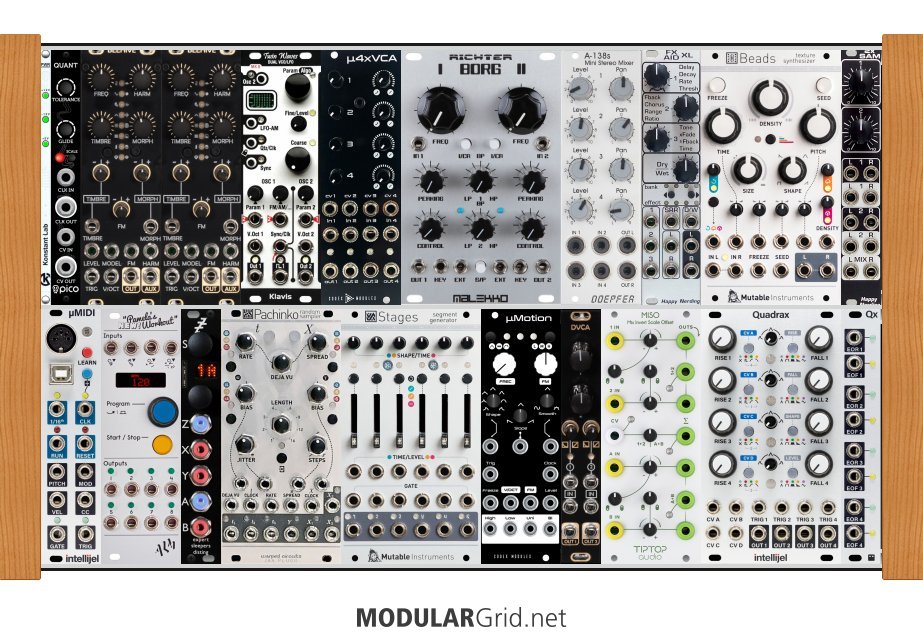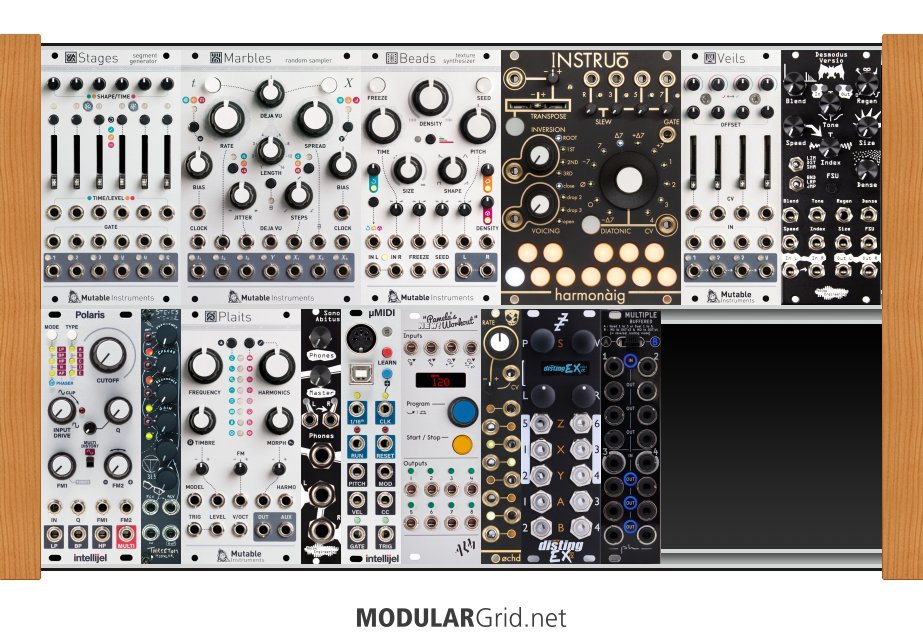Went nuts on this...

I opted to go ahead and "complete" this. So the cab's now full in this version, and there's been some sizable changes...notably in appearance, because where I could substitute smaller clones for the fullsized Mutable modules, I did. In a build this small, it's essential to shrink things down as best as possible while maintaining functionality AND ergonomics.
Top row: Konstant Labs PWRchekr (for keeping tabs on your DC rail performance), Erica Quant (primarily) for the Plaits clones, then those Plaits clones themselves (I doubled the Plaits complement). After that is another internally-quantized dual VCO from Klavis; technically, this is now a TWO-voice system with dual VCOs per voice. The Veils clone handles summing with CV control over mix levels, and this can either be split with the Plaits clones on two of its VCAs, and the Klavis Dual Waves on the other two. This then feeds the two sides of a Malekko Dual Borg (a clone of the original Wiard version) VCF/gate. After that is a stereo mixer for situations where you'd want all of the VCOs as a single "voice" with stereo panning. However, this is something of an option; you could just as easily use the mixer at some other point in the "voicing" row. After this, you then have two stereo effects modules: Happy Nerding's FX Aid XL, then the Beads. But at the end is a final bit of fun, where you've got a dual-input stereo mixer...allowing you to parallel-patch the FX Aid and Beads if you want, putting one unit on "voice 1" and the other on "voice 2".
Bottom row: MIDI Interface, Pam's, then a mk4 Disting because the Disting EX has some depth issues with some cases. The Pachinko is a Marbles clone, then there's the Stages after this. Past that, I totally redid the modulation section. This now starts with a Tides clone (instead of the Ochd, since you get more timescale flexibility + CV with the Tides even though it's only a dual LFO) followed by a 1/2 Veils clone to give the modulation section a pair of VCAs. The MISO after that allows you to take signals from the Tides clone or the Quadrax (or BOTH!) and warp the hell out of them, deriving even more possible modulation signals. And lastly, the Quadrax + the Qx, which allows the Quadrax to do some extremely complicated modulation behavior.
Now you've got something way more potent. By "scrunching" things with the clone modules, I was able to up the module count and the system capabilities without arriving at something that would be a pain to use ergonomically. Mind you, NOBODY gets a first build right, and even this has some areas where things could be improved further; going with a larger case might be one idea there, which would allow you to implement even more improvements. Just 20 more hp per row is a HUGE step forward from a 2 x 84 hp setup without increasing cab costs (in fact, something like a Mantis would be cheaper than many other powered 2 x 84s).



